Article examines advances in central venous catheter biomaterial design

This article will look at the advances in biomaterial design specifically drug eluting, non-drug eluting, lubricious coatings and micropatterning as well as some of the characteristics of each as they relate to CVCs” Wallace et al (2018). Abstract: Central venous catheters (CVCs) are ubiquitous in the healthcare industry and carry two common complications, catheter related […]
Management of cellulitis and soft tissue infections

Cellulitis is a clinical diagnosis and thus is made on the basis of history and physical examination. Imaging may be helpful for characterizing purulent soft tissue infections and associated osteomyelitis” Bystritsky and Chambers (2018). Abstract Cellulitis and soft tissue infections are a diverse group of diseases that range from uncomplicated cellulitis to necrotizing fasciitis. Management […]
Evidence-based assessment and training tool for evaluating PPE protocols

To develop an evidence-based assessment and training tool for evaluating PPE ensembles and doffing protocols, in the assessment of patients with suspected HCIDs” Poller et al (2018). Summary: Background: Healthcare workers caring for patients with high consequence infectious diseases (HCID) require protection from pathogen exposure, for example by wearing personal protective equipment (PPE). Protection is […]
Percutaneous versus cut-down technique for implantable port placement
Both the percutaneous and cut-down technique are safe and effective for TIVAD implantation. Operative times were shorter and the odds of implantation failure higher for cephalic cut-down. As implantation failure is common, surgeons should familiarize themselves with both techniques” Matiotti-Neto et al (2017). Abstract: The superiority of surgical cut-down of the cephalic vein versus percutaneous […]
Article examines tunneled central venous catheters for hemodialysis
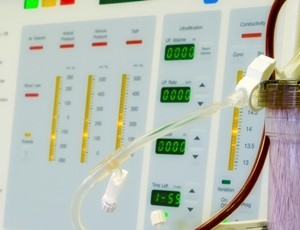
We conclude that most patients initiated HD with CVC and exceed the recommended CVC duration. Men are more likely to initiate HD via CVC” Pillado et al (2017). Abstract: Prolonged use of central venous catheters (CVCs) for hemodialysis (HD) is associated with greater morbidity and mortality when compared with autogenous arteriovenous fistulas (AVF). The objective […]
Blood culture accreditation according to International standard ISO 15189 standards
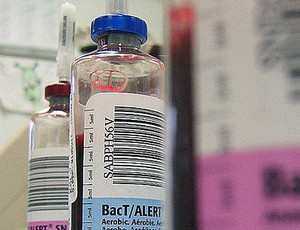
Experience from a nationwide taskforce for promoting quality assurance and competence in clinical microbiology laboratories, guidelines on blood culture” Lamy et al (2018). Abstract: Background: Quality assurance and quality management are driving forces for controlling blood culture best practices but should not be disconnected from the end-point target, i.e., patient value. [ctt link=”MFz4b” template=”1″]ReTweet if […]
Therapeutic vancomycin exposure with continuous infusion in critically ill children
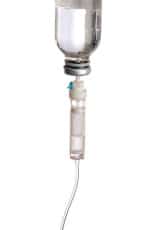
The current continuous infusion of vancomycin dosing scheme used in our population was inappropriate and led to underexposure” Genuini et al (2018). Abstract: OBJECTIVE: Describe and assess a continuous infusion dosing scheme of vancomycin therapy in critically ill children. DESIGN: Retrospective single-center study, January to June 2015. [ctt link=”e97gb” template=”1″]ReTweet if useful… Therapeutic vancomycin exposure […]
Acid-base and electrolytes assessment in severe traumatic brain injury patients
This study aimed to compare the changes in electrolytes and acid-base between NS and BF (Sterofundin® ISO) therapy for post-operative severe traumatic brain injury (TBI) patients in neuro-ICU” Hassan et al (2017). Abstract: BACKGROUND: Normal saline (NS) is a common fluid of choice in neurosurgery and neuro-intensive care unit (ICU), but it does not contain […]
Impact review and discussion of OPAT services in a non-university hospital

The aim is to provide a safe and successful completion of IV antimicrobial treatment at the ambulatory care center or at home without complications and costs associated with hospitalization” Smismans et al (2018). Abstract: Since its introduction in the 1970s in the United States, outpatient parenteral antibiotic/antimicrobial therapy (OPAT) has been adopted internationally for long-term […]
Successful insertion of PICC in patient with cardiac angiosarcoma and neoplasty of right atrium

This report highlights PICC could be used in patient with cardiac disease with a pacemaker placement for chemotherapy” Liu et al (2017). Abstract: INTRODUCTION: Primary cardiac angiosarcoma is a rare tumor and the common treatment is surgical resection followed by chemotherapy. Peripherally inserted central venous catheters (PICCs) are widely used in cancer patients and ultrasound-guided […]
Upper extremity deep vein thrombosis after migration of peripherally inserted central catheter

After patient’s informed consent, we report a case of a 66-year-old male with twice catheter migrations resulting in thrombosis after being diagnosed with cardiac cancer” Wang et al (2017). Abstract: INTRODUCTION: Peripherally inserted central venous catheters (PICC) are widely used in cancer patients and ultrasound-guided PICC insertion could improve success rate. The tip position of […]
Computer-based models for guidewire and catheter navigation

Guidewires and catheters are used during minimally invasive interventional procedures to traverse in vascular system and access the desired position. Computer models are increasingly being used to predict the behavior of these instruments. This information can be used to choose the right instrument for each case and increase the success rate of the procedure. Moreover, […]
Biofilm-production abilities of Staphylococcus epidermis in platelet concentrates

Staphylococcus epidermidis is the predominant contaminant of platelet concentrates (PCs), a blood product used to treat patients with platelet deficiencies. This microorganism is able to form surface-attached aggregates (biofilms) in human skin” Taha et al (2018). Abstract: PURPOSE: Staphylococcus epidermidis is the predominant contaminant of platelet concentrates (PCs), a blood product used to treat patients […]
Comparison of sitting and standing position for central venous catheter insertion
However, there has been no study evaluating the doctor position for US-CVC insertion” Yamasaki et al (2018). Abstract: Central venous catheters (CVCs) provide vascular access for fluid resuscitation, drugs, and antibiotics, and also allow hemodynamic monitoring and cardiac pacing. Recently, the ultrasound-guided CVC (US-CVC) technique has become available, which allows differentiation between veins and arteries […]
PICC withdrawal due to complications was performed in 33% of the patients

The aim of this study was to describe the characteristics of PICCs and to identify factors related to their withdrawal due to complications” Flores Moreno et al (2018). Abstract: BACKGROUND: In pediatrics, complications of the peripherally inserted central venous catheters (PICC) are reported in 30% to 40% of cases, with the most frequent risk factors […]
Article examines efficacy of taurolidine-citrate prophylactic line locking

The aim of this interventional study was to assess the impact of a new strategy using taurolidine-citrate (T-C) prophylactic locks on the CRBSI rate in children with intestinal failure who are receiving HPN” Lambe et al (2018). Abstract BACKGROUND: Catheter-related bloodstream infections (CRBSIs) remain a major issue in patients who are receiving home parenteral nutrition […]
Role of central venous pressure monitoring in critical care settings
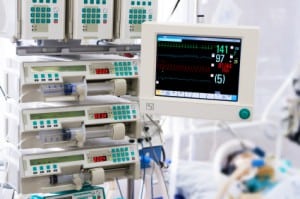
This article explains CVP monitoring, discussing the rationale for its use, the ways CVP can be measured, and the physiological factors that can affect the reliability and validity of CVP measurement” Hill (2018). Abstract: Central venous pressure (CVP) monitoring is used to assess the fluid status of patients in critical care settings. This article explains […]
Administering antibiotic treatment within one hour of the recognition of sepsis
The mortality of patients with sepsis and septic shock is still unacceptably high. An effective calculated antibiotic treatment within 1 h of recognition of sepsis is an important target of sepsis treatment” Richter et al (2018). Abstract: The mortality of patients with sepsis and septic shock is still unacceptably high. An effective calculated antibiotic treatment […]
Theory of porous catheters and their applications in intraparenchymal infusions

Multiport catheters and catheters with a porous surface have been proposed for intraparenchymal infusions of therapeutics in fluid suspensions” Raghavan and Odland (2017). Abstract: Multiport catheters and catheters with a porous surface have been proposed for intraparenchymal infusions of therapeutics in fluid suspensions. Target diseases include brain cancer and serious neurodegenerative diseases, as well as […]
Nutritional screening of patients in an ambulatory infusion service

The purpose of this study was to pilot a screening process followed by nutritional assessment and intervention when warranted for patients with lung malignancies” Berry et al (2018). Abstract: BACKGROUND: Cancer anorexia-cachexia syndrome compromises physical function and nutritional and emotional well-being. Systematic screening followed by nutrition referral for appropriate interventions is rare. [ctt link=”64fMF” template=”1″]ReTweet […]
Factors underlying the occurrence and mortality of bloodstream infections with CRE
To investigate the risk factors underlying the occurrence and mortality of bloodstream infections (BSIs) with carbapenem-resistant Enterobacteriaceae (CRE)” Li and Ye (2017). Abstract: OBJECTIVE: To investigate the risk factors underlying the occurrence and mortality of bloodstream infections (BSIs) with carbapenem-resistant Enterobacteriaceae (CRE). [ctt link=”523wO” template=”1″]ReTweet if useful… Factors underlying the occurrence and mortality of bloodstream […]
The Brazilian experience of detecting blood borne virus infections in blood donors

The history of the development and implementation of the Brazilian nucleic acid testing (NAT) platform to detect and discriminate among human immunodeficiency virus (HIV), hepatitis C virus (HCV), and hepatitis B virus (HBV) infections in blood donors is described here” Rocha et al (2018). Abstract: BACKGROUND: The history of the development and implementation of the […]
Article review twenty years of anomalies in target-controlled infusion

Several of these anomalies can be identified in the current commercially available target-controlled infusion systems and are discussed in this review” Engbers and Dahan (2018). Summary Although target-controlled infusion has been in use for more than two decades, its benefits are being obscured by anomalies in clinical practice caused by a number of important problems. […]
What is the cost of blood products in the United Kingdom National Health Service?
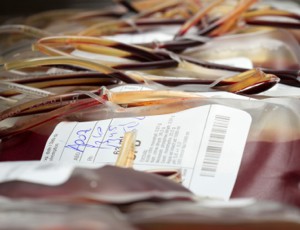
…applying estimates to the blood components supplied to UK hospitals in 2015, the annual cost of blood administration, excluding blood products, exceeds $175 (£120) million” Stokes et al (2018). Abstract: BACKGROUND: In an environment of limited health care resources, it is crucial for health care systems which provide blood transfusion to have accurate and comprehensive […]
Building accurate needle forces into a haptic robotic simulator
The information gained from this syringe was able to be implemented into a haptic simulator for CVC insertions, showing its utility. Survey results showed that experts, fellows, and residents had an overall positive outlook on the haptic simulator’s ability to teach haptic skills” Pepley et al (2018). Abstract: Accurate force simulation is essential to haptic […]
Patterns and predictors of short-term peripherally inserted central catheter use
Among those with short-term PICCs, 374 (9.6%) experienced a complication, including 99 (2.5%) experiencing VTE and 17 (0.4%) experiencing CLABSI events” Paje et al (2018). Abstract: BACKGROUND: The guidelines for peripherally inserted central catheters (PICCs) recommend avoiding insertion if the anticipated duration of use is =5 days. However, short-term PICC use is common in hospitals. […]
Trial evaluates the efficacy of ketoprofen patch to attenuate pain during venous cannulation

The ketoprofen transdermal patch is a proven treatment for musculoskeletal and arthritic pain. We planned this study to evaluate the efficacy of the ketoprofen patch to reduce venipuncture pain” Kumar et al (2018). Abstract: BACKGROUND: Venipuncture pain is an uncomfortable suffering to the patient. It creates anxiety, fear and dissatisfaction. The ketoprofen transdermal patch is […]
Central line-associated mucor velutinosus bloodstream infection

We report here the isolation of Mucor velutinosus from multiple blood cultures performed on samples from Broviac catheters and culture of a Broviac insertion-site wound sample from a 6-year-old boy with a history of intestinal failure secondary to chronic intestinal pseudo-obstruction, parenteral nutrition, and jejunostomy tube dependence” Kumar et al (2018). Abstract: We report here […]
Recurrent migration of peripherally inserted central catheter into the azygos vein
In this case, PICC migration was possibly related to left-sided approach, use of smaller diameter PICC, severe congestive heart failure and her bedbound status. PICC migration should be considered when PICC found be malfunctioning, especially if associated with the above risk factors” Talari et al (2018). Abstract: Peripherally inserted central catheter (PICC) migration into azygos […]
Perioperative fluid management in kidney transplantation

Prospective comparative clinical studies are required to better understand the use of dynamic analyses of flow parameters for adequate fluid management in kidney transplant recipients. We review perioperative fluid assessment techniques and discuss conventional and novel monitoring strategies in the kidney transplant recipient” Calixto Fernandes et al (2018). Abstract: The incidence of delayed graft function […]

